A tungsten penetrator made by tungsten-nickel and other tungsten compounds
- Details
- Category: Tungsten Patents
- Published on Friday, 18 January 2013 14:38
- Hits: 1992
Tel.: 86 592 5129696; Fax: 86 592 5129797
Email: sales@chinatungsten.com
Tungsten News & Tungsten Prices, 3G Version: http://3g.chinatungsten.com
Tungsten News & Tungsten Prices, WML Version: http://m.chinatungsten.com
Tungsten penetrators
- Details
- Category: Tungsten Patents
- Published on Friday, 18 January 2013 14:13
- Hits: 2263
Email: sales@chinatungsten.com
Tungsten News & Tungsten Prices, 3G Version: http://3g.chinatungsten.com
Tungsten News & Tungsten Prices, WML Version: http://m.chinatungsten.com
Yes i4-TECH Putters
- Details
- Category: Tungsten Patents
- Published on Friday, 18 January 2013 13:51
- Hits: 2295
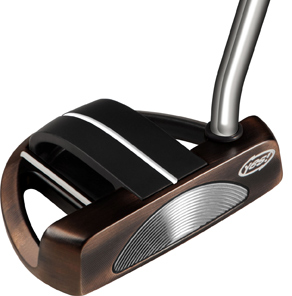
Golf is set to roll out a new line of putters under the “i4-TECH” banner in 2013.
Pictured here is the Yes i4-TECH Stephanie mallet putter, which may look sleek and slim on the outside, but is brimming with technology in the inside. It features a four-piece C-Groove insert (hence the i4-TECH label) with a polymer backing to “further enhance roll through increasing the friction between the ball and the groove edge…It has the added benefit of creating a softer feel.”
The Stephanie model also incorporates a tungsten weighting feature to elevate the MOI for added forgiveness, and has a curving black polymer strip along the crown with a contrasting white sightline for enhanced alignment.
Tungsten Manufacturer & Supplier: Chinatungsten Online - http://www.chinatungsten.com
Tel.: 86 592 5129696; Fax: 86 592 5129797
Email: sales@chinatungsten.com
Tungsten News & Tungsten Prices, 3G Version: http://3g.chinatungsten.com
Tungsten News & Tungsten Prices, WML Version: http://m.chinatungsten.com
Tungsten Carbide Tools and Chainsaw Technology to Make Hoof Trimming Easier
- Details
- Category: Tungsten Patents
- Published on Friday, 18 January 2013 11:16
- Hits: 2206
King Arthur’s Tools introduced Merlin® and Bors® to make hoof trimming a smoother and more economical experience. Merlin and Bors utilize chainsaw technology to present a breakthrough for the hoof trimming industry. The incorporation of a tungsten carbide chainsaw disc into both designs introduces a new technique for hoof trimmers to use. This allows the user to use arms and upper body strength to hold the blade at an angle to the hoof and peel layers away. The already existing labor-intensive chopping motion of current tools is subsequently eliminated. As a result, the new technique that Merlin and Bors utilize drastically reduces fatigue and strain on the wrist.
As new tools introduced into the hoof trimming industry, Merlin and Bors surpass barriers faced by current tools on the market. The inconvenience of sending blades away to be sharpened is eliminated by their new design. The manufacturer is effectively omitted from the blade sharpening process, as the user can effortlessly sharpen the blades of both Merlin and Bors onsite. These are the first tools in the industry that offer the user this high level of convenience.
The Merlin Hoof Trimming Set consists of a miniature long neck angle grinder and three specifically designed accessories for trimming, preparing and finishing hoofs. Bors carbide cutting blade fits standard 4 1/2" (115mm) angle or disc grinders and is designed for use in production on a high volume of hoofs.
Tungsten Carbide Manufacturer & Supplier: Chinatungsten Online - http://www.tungsten-carbide.com.cn
Tel.: 86 592 5129696; Fax: 86 592 5129797
Email: sales@chinatungsten.com
Tungsten News & Tungsten Prices, 3G Version: http://3g.chinatungsten.com
Tungsten News & Tungsten Prices, WML Version: http://m.chinatungsten.com
Hardide CVD Hard Coatings for Mechanical Face Seals
- Details
- Category: Tungsten Patents
- Published on Friday, 18 January 2013 10:16
- Hits: 2299
Introduction
Hardide coatings, an advanced surface coating company, manufactures Hardide chemical vapour deposition (CVD) tungsten carbide/tungsten coatings for application on mechanical seals that are used in heavy-duty rotating equipment for the chemical, oil and gas industries. Mechanical face seals are used in rotating equipment including turbines, compressors, and pumps to lubricate the mechanical assemblies, exclude abrasive media, and prevent leaks. Seal reliability is a key parameter for overall equipment reliability because seal failure can cause damage to expensive equipment, thus resulting in high downtime costs.
Hard Materials
Hard materials are widely utilized for heavy-duty mechanical face seals, especially in the making of highly durable ‘primary' sealing surface that can resist three-body abrasion, corrosion and erosion. Solid hard materials including sintered tungsten carbide, ceramic or silicon carbide are often utilized but they are expensive, brittle and difficult to produce, particularly if the seal design has finer features. There is a substantial difference between thermal expansion properties of solid hard materials and steel. This causes jamming when there is change in temperature.
Hard Coatings
A more efficient technique involves the application of hard coating on mechanical seal components made of steel, which is low cost, tough and much easier to machine. This method also paves the way for better seal design. There are different designs of mechanical seals available but normally these include the primary sealing surfaces, often created as two rings or disks, of which one is a stationary part and second is a rotating part. During the rotation of the seal at a rate of 1000 to 60,000 rpm and more, the mechanical face seal’s operation relies on the fluid layer isolating the primary seal components to lubricate their surfaces for friction reduction and overheating prevention. Coating these hard faces of a mechanical seal prevents scratching by hard particles and the creation of scratch asperities that may rupture the lubricating fluid film.
Hardide CVD Coatings
Hardide CVD tungsten carbide/tungsten coatings fulfill all the key prerequisites for mechanical seal applications. Although the optimal hardness for mechanical seal applications is between 1100 and 1800 Hv, Hardide produces its coatings with a hardness ranging between 450 and 3500 Hv. The typical thickness of Hardide coatings is 50 µm but the company produces thinner or thicker coatings of 5 to 100 µm for certain seal designs. It is possible to polish Hardide coatings to a good finish, typically reaching an Ra better than 0.3 µm by simply polishing without using expensive grinding. Hardide coatings’ uniform structure provides an even wear pattern that enables coated components to maintain an optimum finish for longer period even in the most abrasive environments. These coatings comprise tungsten carbide and tungsten, which resist chemically aggressive and corrosive media, especially acids. Their mechanical properties can be improved by alloying them with small quantities of fluorine or fluorocarbons.
Conclusion
With Hardide CVD hard coatings, users in high wear applications such as valves, pumps and down hole tools operating in power generation, cryogenic equipment, refineries, food manufacturing, and oil and gas facilities can reduce expenses by optimizing part life and improving product performance.
Tungsten Carbide Manufacturer & Supplier: Chinatungsten Online - http://www.tungsten-carbide.com.cn
Tel.: 86 592 5129696; Fax: 86 592 5129797
Email: sales@chinatungsten.com
Tungsten News & Tungsten Prices, 3G Version: http://3g.chinatungsten.com
Tungsten News & Tungsten Prices, WML Version: http://m.chinatungsten.com
Faster and Cheaper Process for Graphene in Li-ion Batteries
- Details
- Category: Tungsten Patents
- Published on Friday, 18 January 2013 09:54
- Hits: 2224
Over the last couple of years, research to improve lithium-ion (Li-ion) batteries have been turning to graphene, particularly after researchers at Northwestern University successfully sandwiched a layer of silicon between graphene sheets in the anodes of Li-ion batteries.
But most of the Li-ion battery work being done with graphene to date has depended on high-vacuum environments to create the layered material. Now Gurpreet Singh, a Kansas State University assistant professor of mechanical and nuclear engineering, is leading a team that's looking at faster and cheaper ways of synthesizing the material.
"We are exploring new methods for quick and cost-effective synthesis of two-dimensional materials for rechargeable battery applications," Singh said in a university press release.
The two-dimensional materials to which Singh refers includes not only graphene but also tungsten disulfide nanosheets. In his work with graphene, which was published in the journal Applied Materials & Interfaces (“Synthesis of Graphene Films by Rapid Heating and Quenching at Ambient Pressures and Their Electrochemical Characterization”),Singh’s team was able to create the graphene outside of a vacuum.
The graphene sheets were grown on copper and nickel foils by placing them in a furnace in which a mixture of argon, hydrogen and methane gases was carefully controlled. The researchers quickly heated and cooled the metal foils, forming the graphene films. The entire process apparently takes less than 30 minutes.
When the researchers then used the graphene films to fashion the negative electrode of a Li-ion battery, they discovered that graphene formed from the copper did not cycle lithium ions and had negligible capacity. However, the graphene electrode created from nickel had far superior performance to the copper version.
"We believe that this behavior occurs because sheets of graphene on nickel are relatively thick near the grain boundaries and stacked in a well-defined manner -- called Bernal Stacking -- which provides multiple sites for easy uptake and release of lithium ions as the battery is discharged and charged," Singh said in the release.
The second line of research that Singh and his team undertook with tungsten disulfide nanosheets involves conversion-reaction batteries. Conversion-reaction batteries are so named because the materials used in the batteries undergo a conversion reaction when in contact with lithium. A fair amount of work is ongoing to get a better handle on the nature of these conversion reactions, but in the meantime there’s a lot of excitement about the high-capacity capabilities of such batteries.
In the Kansas State research, which was published in the Journal of Physical Chemistry Letters (“Synthesis of Surface-Functionalized WS2 Nanosheets and Performance as Li-Ion Battery Anodes”), Singh and his team developed a process for separating bulk tungsten disulfide into two-dimensional crystals, only three atoms thick. When the material is applied to Li-ion batteries it stores and releases lithium ions in a completely different way from the graphene. When lithium comes in contact with the tungsten disulfide the materials undergo a conversion reaction leaving tungsten and lithium sulfide.
Despite all the new enthusiasm for conversion-reaction batteries, Singh concedes tungsten disulfide may not work for some potential applications of Li-ion batteries based on conversion reactions.
Tungsten Manufacturer & Supplier: Chinatungsten Online - http://www.chinatungsten.com
Tel.: 86 592 5129696; Fax: 86 592 5129797
Email: sales@chinatungsten.com
Tungsten News & Tungsten Prices, 3G Version: http://3g.chinatungsten.com
Tungsten News & Tungsten Prices, WML Version: http://m.chinatungsten.com
Benelli Introduces the Lightning-Fast Vinci Speed-Bolt Shotgun
- Details
- Category: Tungsten Patents
- Published on Wednesday, 16 January 2013 13:53
- Hits: 2293
ACCOKEEK, MD - The Benelli designers have taken the tried and true features of that rugged, bird- and target-busting Vinci and incorporated them into a new version called the Vinci “Speed-Bolt.”
Combining these features provide the Vinci Speed-Bolt with all the attributes that tactical shooters seek—superior balance, lightweight, reduced recoil and minimal muzzle climb.
This is what Benelli calls Practical Speed Performance or “PSP,” which is the real performance timeline of “speed,” and includes quickness of mount, immediate target acquisition, fast fire, instant recovery and rapid, reliable follow-up shots.
At the heart of the Vinci Speed-Bolt is the In-Line Inertia Driven System, utilizing Benelli’s new Speed-Bolt – a bolt inset with tungsten, designed for faster cycling and handling loads as light as one ounce—and that means less recoil and muzzle climb. Experienced tactical competition shooters appreciate and value less recoil and muzzle climb in terms of getting on target quicker after the first shot. The next shot can be taken quickly and efficiently, which is critical for scoring winning times.
“The tungsten inset featured in the Speed-Bolt of this new Vinci gives a definite advantage to the competitive shooter,” said Stephen McKelvain, Benelli USA’s VP of Marketing. “With the ability to recovery quicker and hit multiple targets faster, shaving even a fraction of a second can give the winning edge that every competitor desires.”
Tungsten Manufacturer & Supplier: Chinatungsten Online - http://www.chinatungsten.com
Tel.: 86 592 5129696; Fax: 86 592 5129797
Email: sales@chinatungsten.com
Tungsten News & Tungsten Prices, 3G Version: http://3g.chinatungsten.com
Tungsten News & Tungsten Prices, WML Version: http://m.chinatungsten.com
Albert Browne Updates with Two Polar 78N Plus Cutters
- Details
- Category: Tungsten Patents
- Published on Wednesday, 16 January 2013 09:43
- Hits: 2236
Chemical indicator technology specialists Albert Browne will take delivery of two latest generation Polar 78N Plus guillotines in the first quarter of this year.
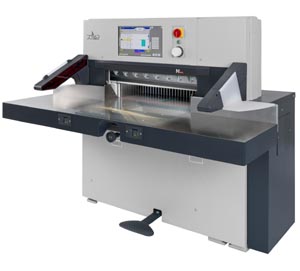 The Leicester company is the largest Polar 78 user in the UK with six machines running continuously eight hours a day. Five years ago the company completed its switch from EBA to Polar technology and this time round Albert Browne looked at two options, closely comparing Polar with a rival manufacturer.
The Leicester company is the largest Polar 78 user in the UK with six machines running continuously eight hours a day. Five years ago the company completed its switch from EBA to Polar technology and this time round Albert Browne looked at two options, closely comparing Polar with a rival manufacturer.
Said general manager Alan Charlton, ‘We normally replace equipment every seven years but the guillotines have been so reliable and productive they have been kept on almost double that time. We use our guillotines intensively so they have to be robust; the performance of the Polars to date was convincing when we came to upgrade.’
The buying decision was based on research by production manager Stephen Brown who said, ‘These new generation Polar 78N Plus guillotines, equipped with air tables, will give us an extra 15 per cent productivity due to the improved cycle time, cut to cut. It was that and the minimal amount of maintenance and repairs required on our previous Polar machines that provided the business case for sticking with Polar. Our operators look forward to using the new guillotines, featuring the latest 18.5-inch touchscreen technology and graphical programming automation.’
Both machines will operate with tungsten carbide knives because the company needs a robust cut as it switches regularly between newsprint and polypropylene laminates. The tungsten blades give a ten times improvement on knife life for these products over HSS blades.
Tungsten Carbide Manufacturer & Supplier: Chinatungsten Online - http://www.tungsten-carbide.com.cn
Tel.: 86 592 5129696; Fax: 86 592 5129797
Email: sales@chinatungsten.com
Tungsten News & Tungsten Prices, 3G Version: http://3g.chinatungsten.com
Tungsten News & Tungsten Prices, WML Version: http://m.chinatungsten.com
The Use of Molybdenum and Tungsten in Crucibles
- Details
- Category: Tungsten Patents
- Published on Thursday, 10 January 2013 09:33
- Hits: 2320
Tungsten and Molybdenum Crucibles

Formed tungsten and molybdenum crucibles perform extremely well in Heat Exchanger Method (HEM) process and are suitable for melting and solidifying of single crystals. Formed crucibles from PLANSEE have thin walls and exhibit superior creep resistance.

Pressed-sintered crucibles from PLANSEE are mainly used in the Kyropolous process for the production of sapphire. When sapphire is easily extracted, better yield and improved quality of sapphire can be realized. PLANSEE’s tungsten and molybdenum-based crucibles are heat-resistant and feature a smooth surface, which make them durable and cost-effective. They are also resistant to corrosion and have a high material density.
PLANSEE’s pressed-sintered crucibles are made from tungsten or molybdenum and have a surface roughness of below 0.8 µm. when the crucible’s surface is rough, the sapphire cannot be easily extracted and this tends to damage the crystal. Besides, the crucible also gets damaged in the process. The ultra-smooth crucibles from PLANSEE eliminate these issues. Sapphire manufacturers can benefit from this product as it eliminates complex and costly processes. In addition, the smooth surface is resistant to corrosion induced by the aggressive melted sapphire. This feature extends the life of the reusable tungsten crucibles.
PLANSEE’s molybdenum crucibles are in huge demand. The reason attributed for this demand is molybdenum is quite complex to develop and involves thorough knowledge with respect to handling the material and setting up the machines. PLANSEE has the required expertise in meeting this demand. According to Heike Larcher, PLANSEE application group manager for Single Crystal Growing, the high-purity material does not contaminate the single crystal.
Conclusion
PLANSEE has extensive expertise in the field of powder metallurgy and develops high purity and high density crucibles that have uniform wall and base thicknesses, which are key prerequisites for attaining excellent creep resistance. Tungsten and molybdenum crucibles are developed in various dimensions. Many customers and major manufacturers across the globe have successfully utilized these crucibles. At PLANSEE, the input material for crucibles is produced in-house from the hot rolling mill, which is touted to be the largest hot rolling mill in the world for refractory metals. Here, massive tungsten and molybdenum sheets are developed which will allow the company to produce products in large dimensions and in huge quantities in the years to come.
Tungsten Manufacturer & Supplier: Chinatungsten Online - http://www.chinatungsten.com
Tel.: 86 592 5129696; Fax: 86 592 5129797
Email: sales@chinatungsten.com
Tungsten News & Tungsten Prices, 3G Version: http://3g.chinatungsten.com
Tungsten News & Tungsten Prices, WML Version: http://m.chinatungsten.com
Veined Cutting Tool - Precorp Assigned Patent
- Details
- Category: Tungsten Patents
- Published on Tuesday, 08 January 2013 14:08
- Hits: 1550
ALEXANDRIA, Va., Jan. 7 -- Precorp, Spanish Fork, Utah, has been assigned a patent (8,342,780) developed by Richard M. Garrick, Woodland Hills, Utah, and John A. Bunting, Provo, Utah, for "shielded PCD or PCBN cutting tools."
The abstract of the patent published by the U.S. Patent and Trademark Office states: "A veined cutting tool for producing holes in various materials is disclosed. The veined cutting tool includes a tungsten carbide body using a sintered abrasive particulate such as diamond (PCD) or Cubic Boron Nitrite (PCBN). The cutting tool shields a portion of the PCD or PCBN edge on the cutting side to reduce the overall length of the exposed PCD or PCBN to prevent the cutting edge from chipping and increase the service life of the cutting tool."
Tungsten Carbide Manufacturer & Supplier: Chinatungsten Online - http://www.tungsten-carbide.com.cn
Tel.: 86 592 5129696; Fax: 86 592 5129797
Email: sales@chinatungsten.com
Tungsten News & Tungsten Prices, 3G Version: http://3g.chinatungsten.com
Tungsten News & Tungsten Prices, WML Version: http://m.chinatungsten.com




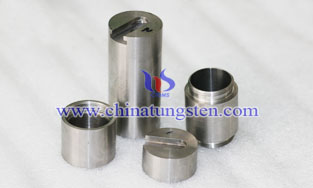


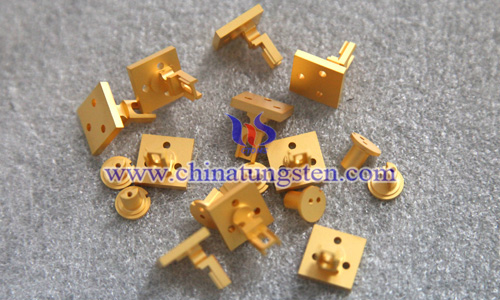
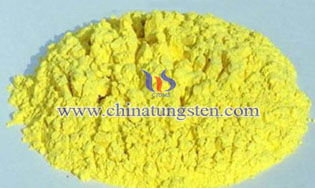
 sales@chinatungsten.com
sales@chinatungsten.com